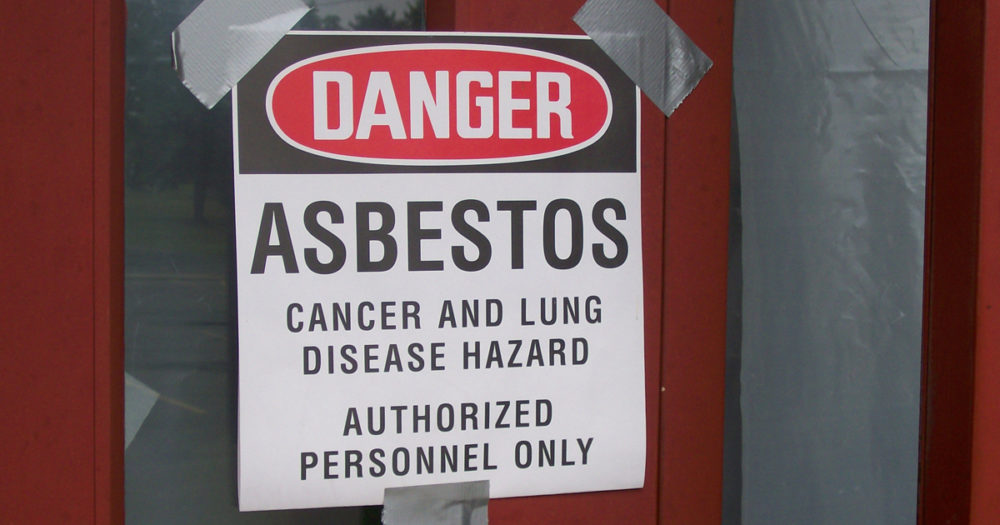Did you know asbestos—the carcinogen that causes mesothelioma—is still in-use and is imported into the country every year? Most people think asbestos went the way of 8-track tapes and brick-sized cell phones, but it’s still legal and lethal in the United States of America, in contrast to the more than 60 countries around the globe that have banned it.
Cancer of the lung, larynx, and ovaries, as well as other diseases such as asbestosis (fibrosis of the lungs), and plaques all stem from continued contact with this deadly substance. An estimated 40,000 Americans die from asbestos-related cancers and respiratory diseases each year. This is why we still need a Mesothelioma Awareness Day.
For too many families in communities all across the country, September 26th is a day to remember the loved ones they have lost and use their voices to warn others about this dangerous carcinogen. For my family, it is my late husband, Alan, whose memory we cherish, and in whose memory we speak out, so that other families may be spared the grief we have experienced.
Here’s what we want you to know:
All Americans are at risk of asbestos exposure. Although it is no longer used as commonly as it once was, legacy asbestos is present in many homes, schools, workplaces, and especially in certain high-risk industries, like construction. The fiber can be found in places you’d expect, like construction materials and automotive products, as well as those you might not expect: like toys, craft products and cosmetics. Just recently, the FDA issued an alert for cosmetic products, marketed towards children and tweens, that tested positive for asbestos.
Mesothelioma, the most commonly known asbestos-related illness, is still considered difficult to diagnose, and the later it’s detected, the more impossible it is to treat. Exposure is nearly invisible. Symptoms may not appear until 10-15 years after exposure. The small respirable asbestos fibers—undetectable by sight, smell or taste—are first inhaled, and then lodged deep into the lung lining, or mesothelium. By the time significant warning signs arrive, it’s often too late. The World Health Organization (WHO) reports that the median survival period after diagnosis is 9-12 months.
The Environmental Protection Agency (EPA) attempted to ban asbestos in 1989. But, then as now, the chemical industry is responsible for keeping asbestos legal and lethal in the United States.
Since 2015, the chlor-alkali industry has become the sole importer and cheerleader of asbestos. A small segment of this industry continues to import and use asbestos to produce the chemical chlorine, despite the fact that safer and more economically-viable options available. As these corporations continue to put their profits ahead of public health, Americans suffer. In 2018, they spent more than $1,000,000 USD purchasing toxic raw chrysotile asbestos from Brazil and Russia and then turned around and reported annual sales of over $8 billion.
For the Asbestos Disease Awareness Organization (ADAO), the organization I co-founded after my husband’s death, Mesothelioma Awareness Day is every day. Through education, advocacy and community efforts we work to raise awareness of asbestos-related illnesses and push for permanent solutions: including a comprehensive ban on asbestos in the United States of America.
Thanks to the work of so many, the bicameral Alan Reinstein Ban Asbestos Now Act (ARBAN) of 2019 (S. 717 and H.R. 1603) introduced in Congress by Senator Jeff Merkley (D-OR), Representative Suzanne Bonamici (D-OR), Chairman Frank Pallone (D-NJ), Representative Elissa Slotkin (D-MI), and co-sponsored by many other members, is moving towards passage. Earlier today, during a during a committee meeting where the legislation was moved forward, Chairman Pallone, noted, “
This bill aims to save lives by banning asbestos use and importation, without exceptions or exemptions. With the support of nearly 60 cosponsors and 17 trade unions and organizations, our collective voices are stronger than ever before.
We refuse to lose sight of the human cost of asbestos. As we honor those who are no longer with us, we continue to advocate for those at risk of exposure. Prevention remains the only cure for asbestos-caused diseases. We must push our elected officials to put public health before private profit, and as we continue to call for a full ban, we invite you to join us.
Together, we can ban asbestos in the United States for good, and work to end the unnecessary and deadly threat asbestos poses to public health and safety.

